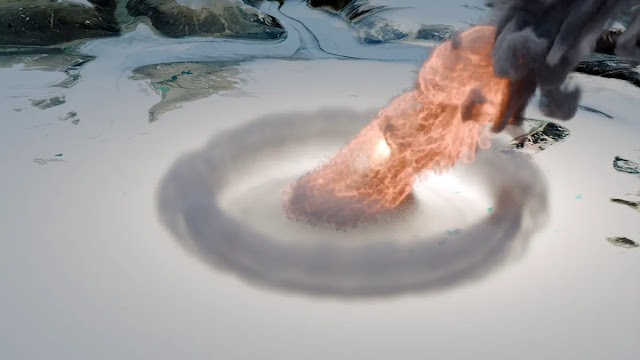Using the X-ray laser European XFEL in Schenefeld, a multinational team of researchers led by Mungo Frost from the SLAC research center in California has garnered fresh insights into the generation of diamond rain on ice worlds like Neptune and Uranus. The findings, which were just released in the scholarly journal Nature Astronomy, also offer hints about how these planets’ intricate magnetic fields came to be.
Because of the enormous pressure found inside the massive gas planets, scientists had previously found in their studies on X-ray lasers that diamonds should form from carbon compounds. From the upper layers, these would then descend farther into the planets’ interiors as a rain of priceless stones.
div style=”text-align: justify;”>
It has recently been demonstrated by a novel experiment at the European XFEL that the creation of diamonds from carbon compounds begins earlier than previously thought and at lower pressures and temperatures. This implies that diamond rain develops earlier than previously believed for the gas planets, and may therefore have a greater impact on the creation of magnetic fields. Furthermore, “mini-Neptunes,” or gas planets smaller than Neptune and Uranus, can potentially experience diamond rain. Exoplanets are planets that exist outside of our solar system but do not exist within it.
The diamond rain can entice gas and ice as it moves from the planets’ outer to interior layers, creating currents of conductive ice. Planetary magnetic fields are created by conductive fluid currents operating like a type of dynamo. According to Frost, “the diamond rain probably has an influence on the formation of Uranus’ and Neptune’s complex magnetic fields.”
As a carbon source, the group used a plastic sheet consisting of the hydrocarbon compound polystyrene. Diamonds are created from the foil at extremely high pressure; this process is similar to what happens inside planets and can be replicated at the European XFEL. Using diamond stamp cells and lasers, the researchers were able to replicate the tremendous pressure and temperature of almost 2200 degrees Celsius seen inside the ice gas giants. The sample is compressed between two diamonds in the stamp cells, which operate similarly to a tiny vice. The precise timing, circumstances, and order of the diamond creation in a stamp cell may be studied with the use of European XFEL X-ray pulses.
Scientists from European XFEL, the German research facilities DESY in Hamburg, and the Helmholtz Centre Dresden-Rossendorf, as well as other research organizations and universities from other nations, are also members of the multinational research team. This work was made possible in large part by the European XFEL user collaboration HIBEF, which includes the research institutions HZDR and DESY.
“We have made great progress at the European XFEL and gained remarkable new insights into icy planets thanks to this international collaboration,” says Frost.



